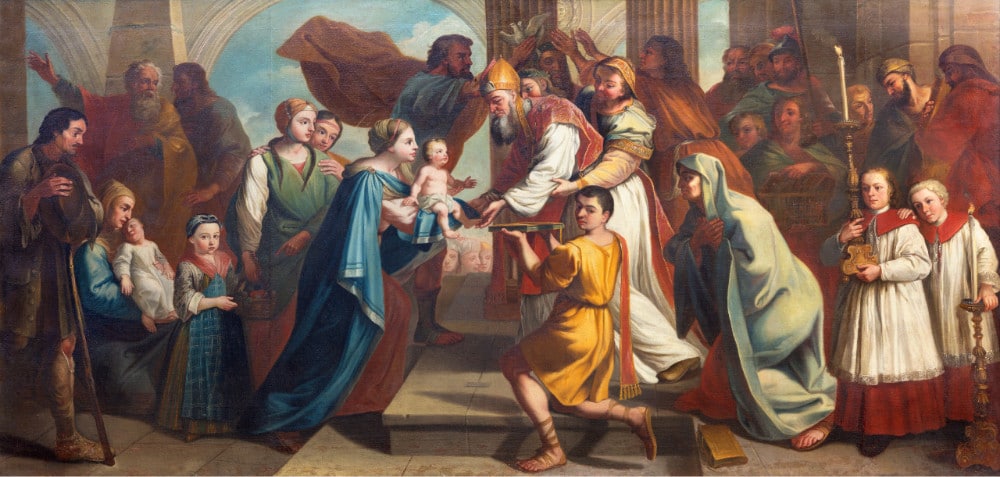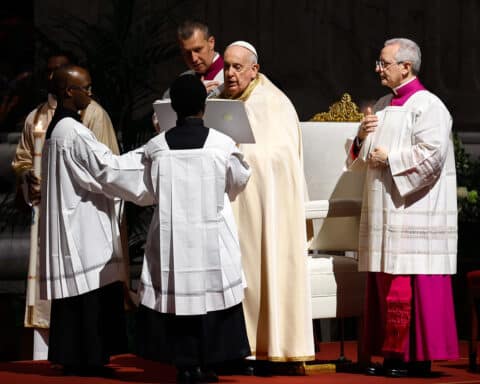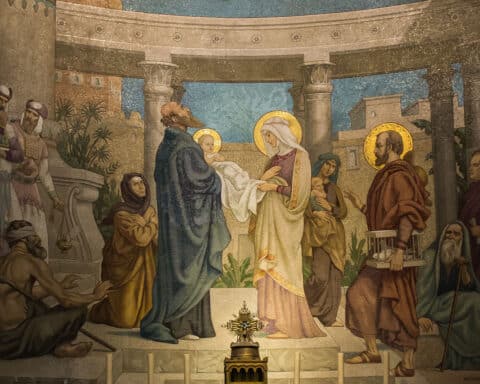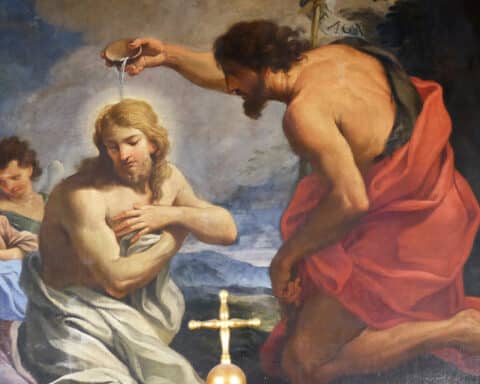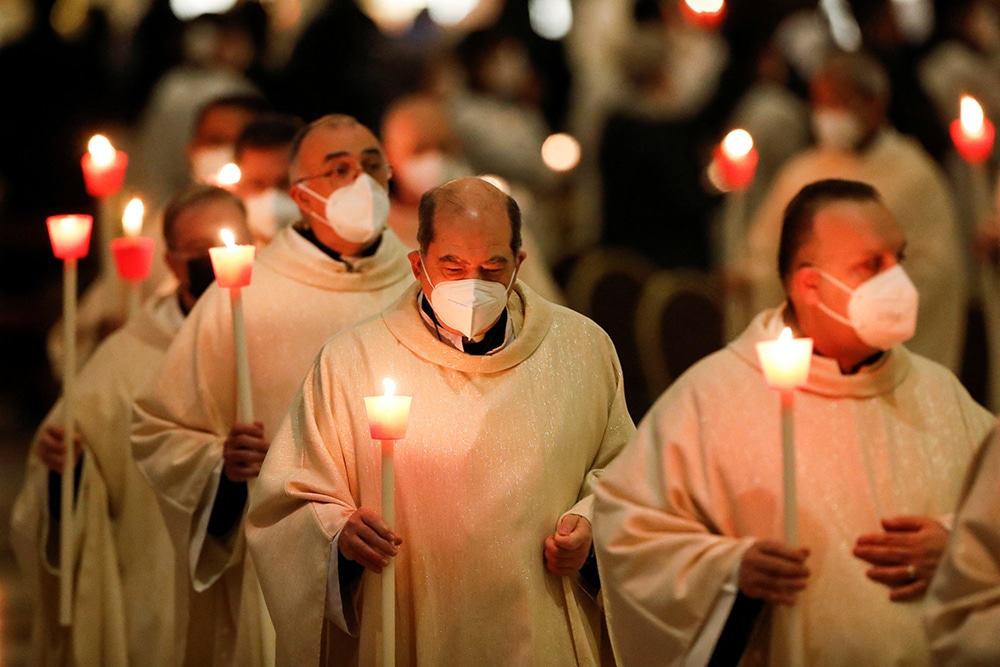The Christmas light of the Word made flesh shines again in the darkness of winter on Feb. 2, when the Church celebrates the feast of the Presentation of Jesus in the Temple, 40 days after Christmas. On this day, we remember how, in obedience to the Mosaic Law, Mary and Joseph brought Jesus to Jerusalem to consecrate him to the Lord, completing the period of purification after his birth (which is why this feast has also been called the Purification of the Blessed Virgin Mary). Mary humbly offers her treasure, the light of the world, before the throne of his heavenly Father, just as on Epiphany, kings had poured out their treasures before his cradle.
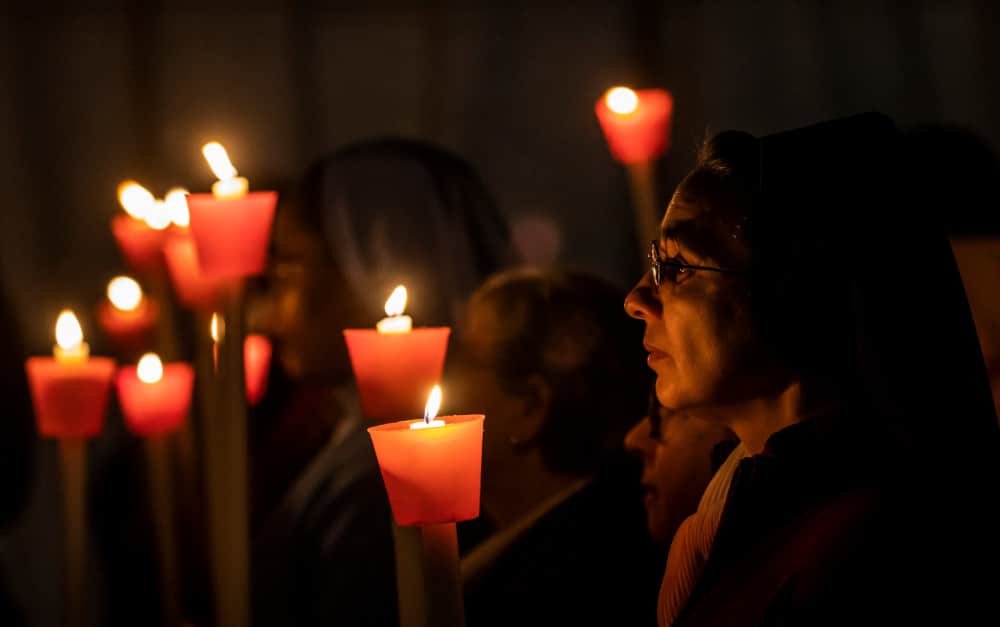
Since the fifth century, the Church has had the custom of blessing and lighting candles on this day, recalling the lights of Advent and Christmas and anticipating the Paschal light of Easter. In 1997, St. John Paul II declared Feb. 2 the World Day for Consecrated Life, a reminder of the religious vocation to “bear witness in the world to Christ, the light that never fades.” Even Punxsutawney Phil keeps this feast, since Groundhog Day originates in a German Candlemas tradition that a badger’s shadow can predict the coming of spring!
Meditating on the liturgy of Candlemas helps us to dive more deeply into the meaning of this feast of light in the darkness. The liturgy begins as the faithful gather with candles, traditionally made of beeswax for use in the coming year. As the candles are lit, reminding us of the fire of the Paschal candle — the light of Christ passed onto us at our baptism — an antiphon is sung that prepares our hearts for the Lord’s coming into his temple: “Behold our Lord will come with power, to enlighten the eyes of his servants.”
This antiphon echoes the words of the prophet Malachi in the feast’s first reading, words meant to startle us by their contrast with the gentle image of Mary presenting her baby: “And suddenly there will come to the temple the Lord whom you seek, and the messenger of the covenant whom you desire. Yes, he is coming, says the Lord of hosts. But who will endure the day of his coming? And who can stand when he appears? For he is like the refiner’s fire” (Mal 3:1-4).
This child is the mighty Lord, who comes now in humility into his temple to enlighten and purify us to offer a pleasing sacrifice to God. The prayer over the candles reminds us that we are his temples, blessed to be illuminated by his transforming light: “O God, true light, who create light eternal, spreading it far and wide, pour, we pray, into the hearts of the faithful the brilliance of perpetual light, so that all who are brightened in your holy temple by the splendor of these candles may happily reach the light of your glory.” The splendor of the candles we hold is a symbol of the light of Christ, of his grace poured into our hearts that frees us from sin and leads us to the light of glory.
The responsorial psalm (Ps 24:7, 8, 9, 10) takes up the theme of welcoming the Lord into his temple: “Lift up, O gates, your lintels; reach up, you ancient portals, that the king of glory may come in!”
This psalm of David is traditionally understood to celebrate the return of the Ark of the Covenant to Jerusalem, bringing God’s presence back within its walls; David calls to the city to lift higher the top of its gates, opening them wider in joy to welcome the King of Glory. When we “lift up our hearts” at Mass, we “open wide the doors for Christ,” to quote again St. John Paul II. We welcome God’s presence, who has “made his dwelling among us” in the Word made flesh, so that we might “see his glory” (cf. Jn 1:14).
The second reading, from the Letter to the Hebrews, describes how the Son, tested by suffering, freed his brothers and sisters who had been enslaved by the fear of death, as their “merciful and faithful high priest before God” (Heb 2:17).
St. Thomas Aquinas explains that Christ is “the splendor of the Father’s glory” not only because he is co-eternal and equal to the Father in glory and dignity, but because he is “Wisdom itself.” Wisdom shines forth, revealing someone’s goodness; Christ, the eternal Word who is Wisdom, perfectly reveals the Father’s glorious goodness, and shares that light of wisdom with us through the grace of his Spirit, to lead those who share in his Sonship by baptism to the eternal light of glory. By our divine adoption, Christ wills not only to save us, but even to pour out his splendor and wisdom into our hearts. So we must open our hearts more and more to receive him.
The Gospel reading, Luke 2:22-40, introduces Simeon and Anna, “righteous and devout” elderly Jews who have waited faithfully for the coming of the Lord into his temple. Both are prophetically inspired to recognize the Child Jesus as the promised Messiah. Simeon’s joyful prayer of thanks, as he blesses the child, welcomes him as the king of glory on behalf of all Israel, in words now prayed every night by the Church at Compline:
“Now, Master, you may let your servant go/ in peace, according to your word, / for my eyes have seen your salvation, / which you prepared in the sight of all the peoples: / a light for revelation to the Gentiles, / and glory for your people Israel.”
Simeon echoes the prophet Isaiah, who foretold that the Messiah would be “a light to the nations, that my salvation may reach to the ends of the earth” (Is 49:6). For Jews, “glory” means God’s dwelling, his majestic unapproachable Shekinah on Mount Sinai, that filled the temple where only the high priest could enter. In Christ, God has come to make us his holy place and fill us with his glory.
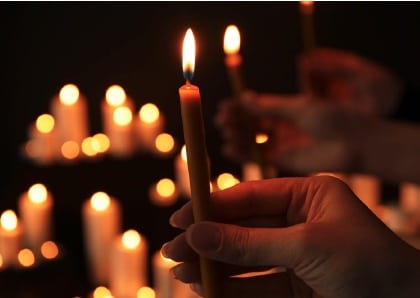
On Candlemas in A.D. 638, Bishop Sophronius preached to Christians in Jerusalem words that speak to us as well: “The light has come and has shone upon a world enveloped in shadows; the Dayspring from on high has visited us and given light to those who lived in darkness. This, then, is our feast, and we join in procession with lighted candles to reveal the light that has shone upon us and the glory that is yet to come to us through him. So let us hasten all together to meet our God.”
This Candlemas, we can give thanks that God has revealed his glory to us, inviting us to approach and dwell in him. St. John Paul II writes to those in consecrated life that this feast “is an eloquent icon of the total offering of one’s life” as witness to Christ’s own poverty, chastity, and obedience. All of us, like Simeon and Anna, are called to open our hearts to Christ and bear witness to the splendor of his glory.
Dr. Daria Spezzano, Ph.D., is the assistant chair of theology at Providence College in Providence, Rhode Island.

